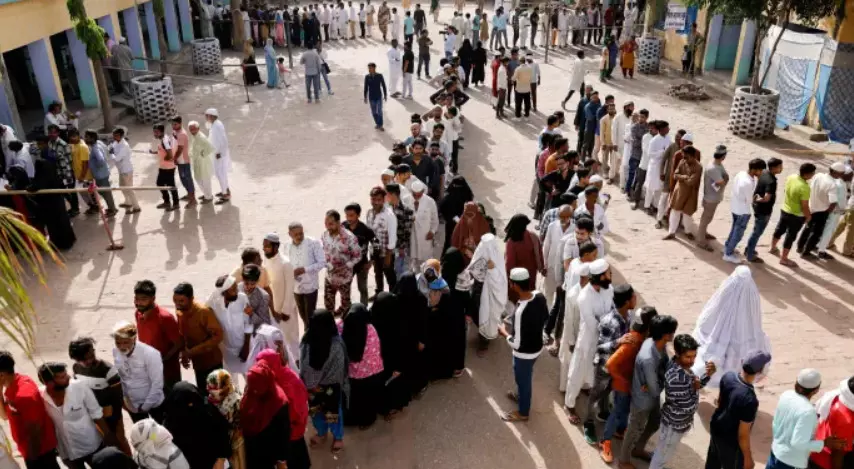TRENDING TAGS :
Analysis: What does the voting trend mean in the first phase of Lok Sabha elections?
In the last elections in Madhya Pradesh, 75 percent votes were cast, whereas in this election only 63 percent votes were cast. In the 2019 elections in Rajasthan, 64 percent votes were cast, whereas this time this figure has been only around 57 percent.
Voting for the Lok Sabha elections 2024 is to be held in the country in 7 phases. For the first phase, about 64 percent votes were cast on 102 seats in 21 states of the country on Friday. Compared to the previous elections, the percentage of voting in this election was less. There was about 70 percent voting in the last elections. Except Tripura, the voting figure has not reached 80 percent in any state in the country. Maximum 80.6 percent votes were cast in Tripura. About 78 percent voting is reported in Bengal. The lowest turnout in the entire country was seen in Bihar. There is news of only 47.50 percent voting in Bihar. In such a situation, questions are being raised as to why the voters did not reach the polling booth?
Voters did not show the same enthusiasm as in 2019 and 2014:
Low voting may be a cause for concern BJP because after the rise of Modi era in national politics, there was a continuous increase in the vote percentage. The vote percentage was good in 2014 and 2019. In this election, BJP has set the target of Mission 370 for itself. There have been continuous claims from BJP that the party will easily reach this target.
After the decline in voting percentage, experts are raising questions whether BJP voters, like BJP leaders, have also become victims of overconfidence? Did BJP voters not reach the polling booth? However, no detailed data regarding this has yet been revealed on the basis of which claims can be made as to which area's voter turnout has been high and which has been low.
After the big decline in voting percentage, the problems of BJP leadership may increase.
BJP has been very active in this election regarding Mission South. PM Modi is continuously holding meetings in the southern states. To reach the target of 370, BJP will have to perform well in the states of South India along with the success of North India. However, in such a situation, questions are being raised whether BJP's preparation for Mission South was lacking in states like Rajasthan, UP, Madhya Pradesh, Bihar.
In the last Lok Sabha elections in Bihar, about 53 percent voting took place on these seats, whereas in this election only about 47 percent votes were cast. If we talk about Uttar Pradesh, then about 67 percent voting took place in the last elections on the seats where voting took place in this phase. This time only 57 percent votes were cast. In Madhya Pradesh too, there has been a huge decline in the vote percentage in this election as compared to the previous elections.
In the last elections in Madhya Pradesh, 75 percent votes were cast, whereas in this election only 63 percent votes were cast. In the 2019 elections in Rajasthan, 64 percent votes were cast, whereas this time this figure has been only around 57 percent.
However, on one hand, some experts are raising alarm bells for BJP due to low turnout. At the same time, some figures show that low turnout in elections may be an indication that the public does not want change. Many times it has been seen in state elections that when there has been bumper voting, there have been changes in power. More voting has been taking place to change the government. The ruling parties have benefited from low voting.
There has been a decline in voting percentage in 5 out of the last 12 elections. Whenever the voting percentage has decreased, the government has changed 4 times. At the same time, the ruling party has returned. In the 1980 elections, the voting percentage declined and the Janata Party government was removed from power. Congress government was formed in place of Janata Party. In 1989, once again a decline in vote percentage was recorded and the Congress government lost. Government was formed at the center under the leadership of Vishwanath Pratap Singh. In 1991, there was a decline in voting once again and Congress returned to the centre. There was a decline in voting in 1999 but there was no change in power. Whereas in 2004, once again the opposition parties got the benefit of decline in voting.a



